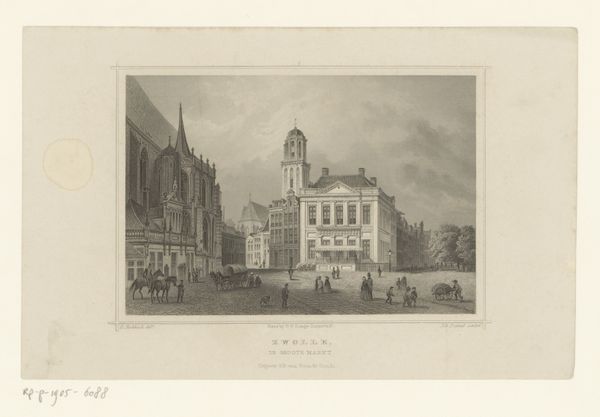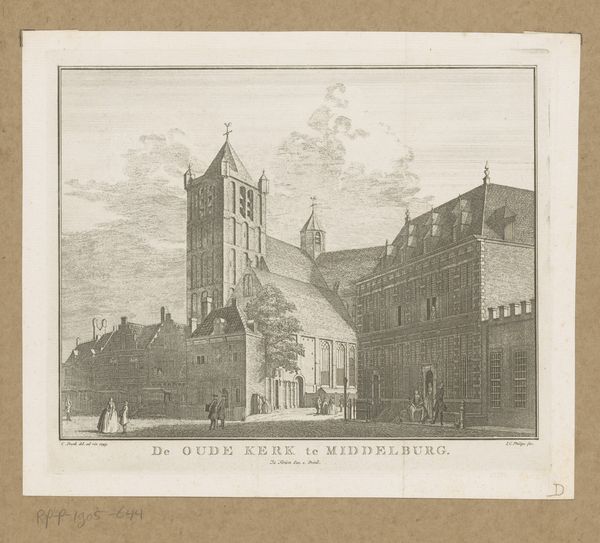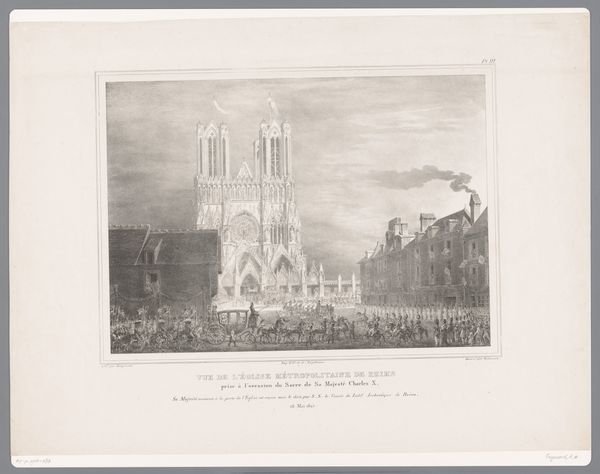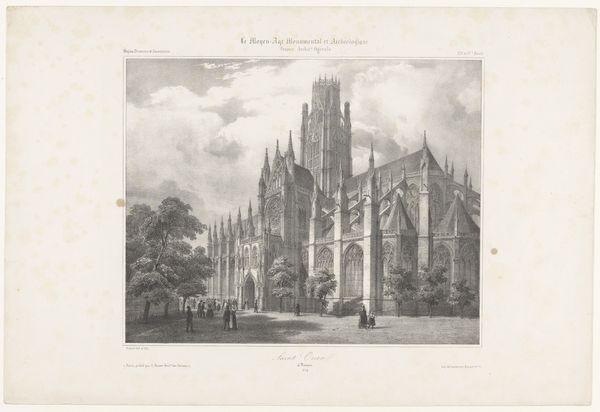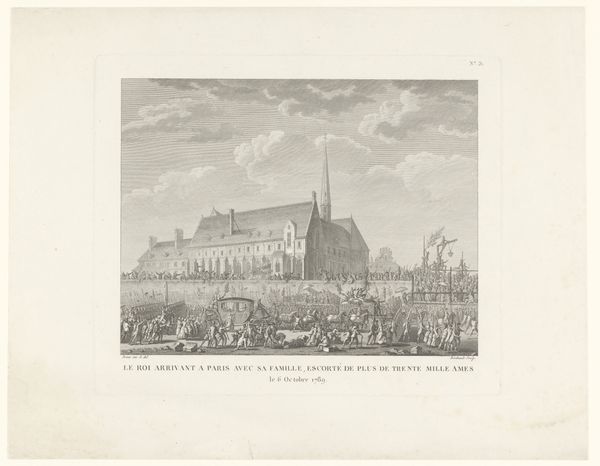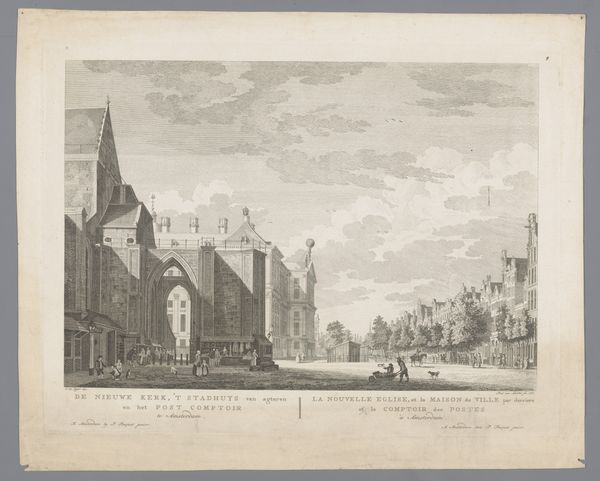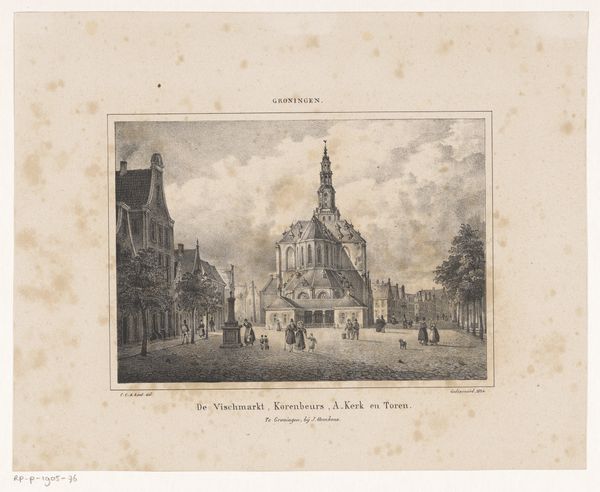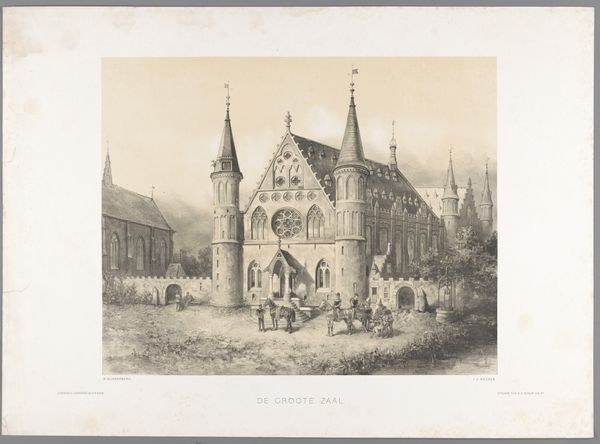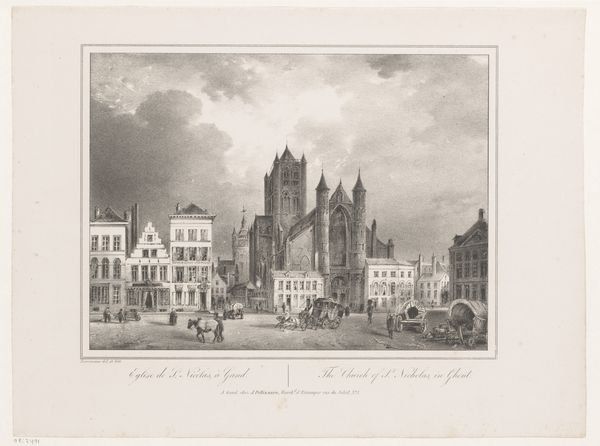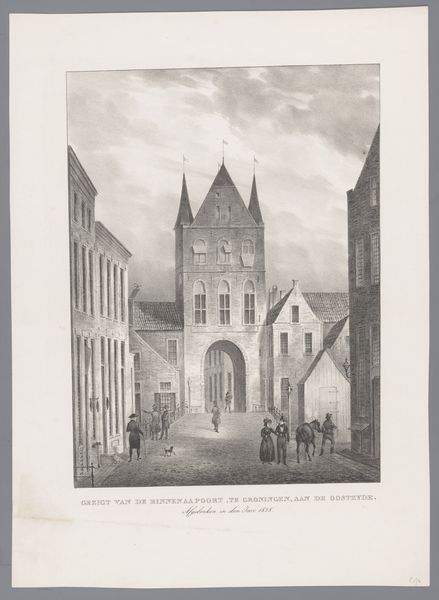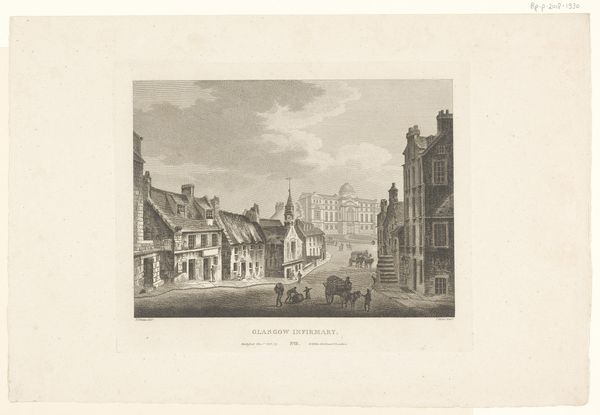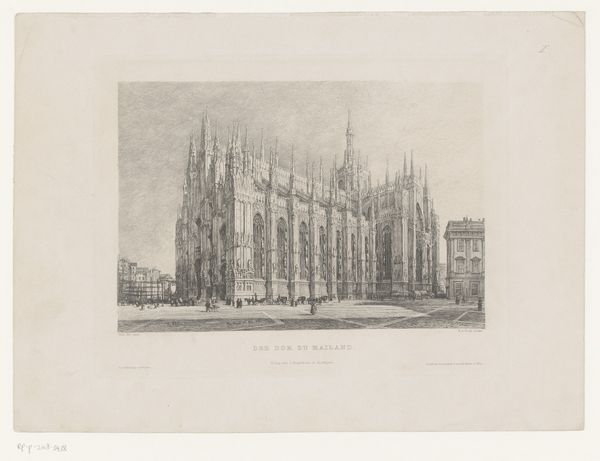
Zicht op de basiliek Saint-Remi te Reims, op de kroningsdag van Karel X van Frankrijk 1825
0:00
0:00
print, engraving
#
neoclacissism
# print
#
perspective
#
line
#
cityscape
#
history-painting
#
academic-art
#
engraving
#
realism
Dimensions: height 431 mm, width 568 mm
Copyright: Rijks Museum: Open Domain
Curator: Looking at this print, it feels like a study in contrasts - grandeur set against a delicate medium. The subject here is titled “Zicht op de basiliek Saint-Remi te Reims, op de kroningsdag van Karel X van Frankrijk,” created in 1825 by Alexandre Evariste Fragonard. Editor: It’s beautiful, though there is also a sense of fragility. It feels less like a celebration of power and more like a fragile monument struggling to contain the event, doesn't it? Curator: Indeed. Fragonard captured the coronation of Charles X with a clear agenda of restoring the Bourbon monarchy following the Revolution. But, examining it through a post-colonial lens, we see the contradictions of attempting to reinstate absolute power after a significant societal uprising. Editor: That is an important point. This image speaks to a pivotal time in French history and to me it feels deliberately staged. The procession, the meticulously rendered facade, it’s all meant to reinforce a specific image of stability and divine right. Curator: Absolutely. Consider the composition, the deliberate positioning of the basilica, dominating the scene. It reminds me of Foucault's work on power structures, in that the artist shows us what should be admired rather than allowing us space to make our own interpretations. It's about conveying legitimacy. Editor: You know, while admiring the intricate architectural rendering and acknowledging that element of control you describe, it's equally vital to ponder how prints, as relatively accessible objects, reached diverse audiences and invited varying interpretations and forms of participation to events. The history of this print implicates it in dialogues and counter-narratives as well. Curator: True. Despite Fragonard's intent, viewers from different socio-economic backgrounds might perceive this event with various sentiments, given the restored monarchy’s impacts on social justice and wealth distribution. We could view this image as less an artifact that bolsters absolutist power and more as an artefact caught between absolutist history and rising democratic sentiment. Editor: Precisely, a visual object carrying varied discourses. Thank you, this visit allowed me to see in this print an interesting blend of grand spectacle and societal tensions rendered through the elegant discipline of line. Curator: And for me, it’s a clear example of how even seemingly straightforward historical depictions contain complex narratives, political messages and the potential to spark important dialogue about history, power, and perspective.
Comments
No comments
Be the first to comment and join the conversation on the ultimate creative platform.
